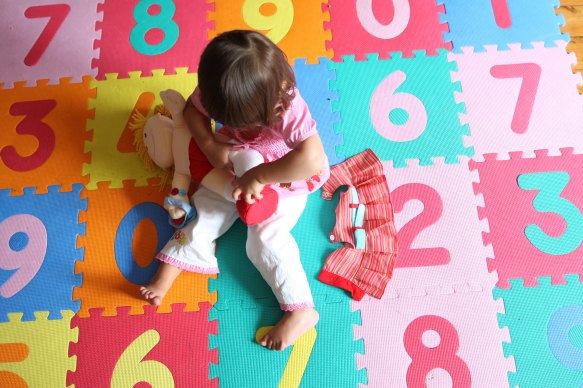Save articles for later
Add articles to your saved list and come back to them any time.
Australian families spent as much as one-sixth of their income on childcare last year, with costs far higher than in most other OECD countries.
The second interim report from the Australian Competition and Consumer Commission’s childcare inquiry also found that the system was underpinned by government subsidies that were too complex for parents to understand.
The competition watchdog has found that the cost of childcare was less affordable in Australia last year than most other OECD countries. Credit: Peter Braig
In the four financial years between 2018 and 2022, an average Australian family with two children under three was spending 16 per cent of its net household annual income on centre-based full-time daycare, the report found.
The competition watchdog said this made childcare “less affordable for households than in most other OECD countries”, where the average was 9 per cent, putting Australia 26th out of 32 countries in the Organisation for Economic Co-operation and Development.
But the ACCC findings do not take into account the federal government’s cheaper childcare changes, which came into effect in July and gave hundreds of thousands of families expanded access to subsidies.
Nonetheless, the ACCC found that current policies, including the Child Care Subsidy and the hourly rate cap, were failing to drive down costs.
“The operation of the Child Care Subsidy – and its inherent complexity – can make it very difficult for parents and guardians to accurately estimate their subsidy entitlement. This makes it challenging to accurately compare the out-of-pocket expenses they will face with different services,” the report found.
Among its draft recommendations, the ACCC proposed the activity test that determines the number of hours of subsidised childcare a family is entitled to should be removed or substantially reconfigured as “it may be acting as a barrier to more vulnerable children accessing care and creating a barrier to workforce entry or return for some groups”.
It suggested this could be replaced with a specific entitlement, such as a certain number of care days.
ACCC head Gina Cass-Gottlieb said the watchdog had met governments of other countries and examined childcare policies in several OECD countries, which had informed its view that the federal government should consider direct price regulation measures such as requiring free services for a certain number of hours.
“We have observed that many countries have decided to spend more on childcare to improve affordability and are moving towards greater regulation of childcare fees by offering low fees or free hours, supported by supply-side subsidies,” Cass-Gottlieb said.
The ACCC also found that the cost for large providers providing centre-based daycare increased by 27 per cent between 2018 and 2022, outstripping inflation, with staff wages the biggest expense for providers.
Not-for-profit centre-based daycare providers were far more likely to pay their staff above award wages (93 per cent of staff) than for-profit providers (62 per cent of staff). Staff at not-for-profit providers were also more likely to be employed full-time.
Federal Education Minister Jason Clare said the report showed the former Coalition government’s efforts to cap prices had not worked, as costs hit almost double the OECD average last year.
“The good news is our changes have seen families pay on average around 14 per cent less per hour, per child for centre-based daycare. But there is more work to do, and this report points the way for where the next stage of reforms could lead.”
Early Childhood Education Minister Anne Aly said the findings would tie in with a review by the Productivity Commission “helping us chart the course to universal access to early childhood education and care”.
Start the day with a summary of the day’s most important and interesting stories, analysis and insights. Sign up for our Morning Edition newsletter.
Most Viewed in Politics
From our partners
Source: Read Full Article

